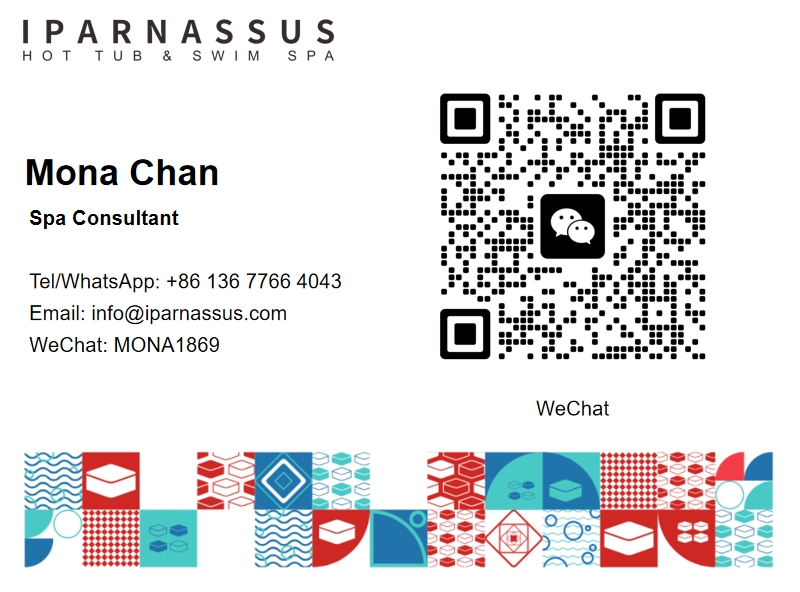Will Ssd a Pay for a Swim Spa?
2025-04-24 13:48:16
If you're considering purchasing a swim spa, such as the popular Swim Spa 4M, you may be wondering about payment options. One question that often arises is whether Social Security Disability (SSD) benefits can be used to pay for a swim spa. This blog post will explore this topic in detail, discussing the potential benefits of swim spas for individuals with disabilities, the limitations of SSD payments, and alternative financing options. We'll also delve into the specific features of the Swim Spa 4M and how it may benefit those with disabilities.
What Are the Health Benefits of a Swim Spa 4M for Individuals with Disabilities?
Improved Mobility and Flexibility
The Swim Spa 4M offers significant benefits for individuals with disabilities, particularly in terms of improving mobility and flexibility. The warm water and buoyancy provided by the spa create an ideal environment for low-impact exercises and stretching. For those with limited mobility due to conditions such as arthritis, fibromyalgia, or multiple sclerosis, the product can be a game-changer. The resistance provided by the water jets in the product allows users to engage in aquatic exercises that can help strengthen muscles and increase range of motion without putting undue stress on joints. Furthermore, the adjustable water temperature in the product can help soothe sore muscles and reduce inflammation, making it easier for individuals with disabilities to move and exercise comfortably.
Pain Management and Stress Relief
One of the most significant advantages of the Swim Spa 4M for individuals with disabilities is its potential for pain management and stress relief. The combination of warm water, hydrotherapy jets, and the ability to perform gentle exercises can help alleviate chronic pain associated with various disabilities. The Swim Spa 4M's design allows for targeted massage of specific areas of the body, which can be particularly beneficial for those dealing with localized pain. Additionally, the calming effect of being in water can significantly reduce stress and anxiety, which are often heightened in individuals living with disabilities. The Swim Spa 4M provides a private, controlled environment where users can relax and unwind, potentially reducing the need for pain medications and improving overall quality of life.
Cardiovascular Health and Weight Management
For many individuals with disabilities, maintaining cardiovascular health and managing weight can be challenging due to limited mobility. The Swim Spa 4M offers a solution by providing a low-impact environment for cardiovascular exercise. The adjustable current in the product allows users to swim or perform aquatic exercises at their own pace, gradually building endurance and improving heart health. This is particularly beneficial for those who may find traditional forms of exercise difficult or impossible. Moreover, the resistance provided by water in the product can help burn calories more efficiently than land-based exercises, aiding in weight management. Regular use of the Swim Spa 4M can contribute to improved overall health, potentially reducing the risk of secondary health conditions often associated with disabilities.
Can SSD Benefits Cover the Cost of a Swim Spa 4M?
Understanding SSD Benefit Limitations
While Social Security Disability (SSD) benefits are designed to provide financial support for individuals with disabilities, there are limitations to what these benefits can cover. Generally, SSD benefits are intended to help with basic living expenses such as food, housing, and clothing. The purchase of a Swim Spa 4M, despite its potential health benefits, is typically not considered a basic necessity under SSD guidelines. It's important to understand that SSD benefits are often limited in amount and are meant to provide for essential needs rather than luxury items. However, this doesn't necessarily mean that individuals receiving SSD benefits cannot explore ways to acquire a Swim Spa 4M. It's crucial to consider the specific circumstances of each case and explore all available options.
Exploring Medical Necessity Claims
In some cases, it may be possible to make a case for the medical necessity of a Swim Spa 4M. If a healthcare provider can demonstrate that the use of a Swim Spa 4M is essential for managing a disability or improving an individual's health condition, there might be a possibility of having it covered under certain circumstances. This could involve obtaining a prescription or recommendation from a doctor stating that hydrotherapy, such as that provided by the Swim Spa 4M, is a crucial part of the individual's treatment plan. However, it's important to note that even with such documentation, getting SSD to cover the cost of a Swim Spa 4M can be challenging and is not guaranteed. It would likely require a thorough review process and may necessitate appeals if initially denied.
Alternative Funding Options for a Swim Spa 4M
Given the limitations of SSD benefits in covering the cost of a Swim Spa 4M, it's worth exploring alternative funding options. One possibility is to look into grants or assistance programs specifically designed for individuals with disabilities. Some non-profit organizations and foundations offer financial aid for adaptive equipment and home modifications, which could potentially include a Swim Spa 4M if it's deemed beneficial for the individual's health and independence. Another option could be to explore financing options offered by Swim Spa 4M dealers, which might include installment plans or special financing for individuals with disabilities. Additionally, crowdfunding platforms have become increasingly popular for raising funds for medical expenses and equipment, and could be considered as a way to gather support from family, friends, and community members to help fund the purchase of a Swim Spa 4M.
What Features of the Swim Spa 4M Make It Suitable for Individuals with Disabilities?
Accessibility and Safety Features
The Swim Spa 4M is designed with accessibility and safety in mind, making it an excellent choice for individuals with disabilities. One of the key features is its easy entry and exit system, which often includes steps with handrails or a lift mechanism for those with limited mobility. The non-slip surfaces both inside and around the Swim Spa 4M reduce the risk of accidents, providing a safer environment for users. Additionally, the Swim Spa 4M typically has multiple depth zones, allowing users to find the most comfortable and safe water level for their needs. The spacious design of the Swim Spa 4M also accommodates assistive devices if needed, ensuring that individuals with various types of disabilities can use the spa comfortably and safely.
Customizable Therapy Options
One of the standout features of the Swim Spa 4M for individuals with disabilities is its customizable therapy options. The spa is equipped with adjustable jets that can be tailored to target specific areas of the body, providing personalized hydrotherapy sessions. This is particularly beneficial for those with localized pain or specific mobility issues. The Swim Spa 4M also offers variable water current settings, allowing users to adjust the intensity of their swim or exercise routine according to their ability and comfort level. Some models of the Swim Spa 4M even come with pre-programmed therapy routines designed for different health conditions, making it easier for users to engage in beneficial exercises without the need for constant adjustment.
Year-Round Usability and Maintenance
The Swim Spa 4M offers the advantage of year-round usability, which is particularly beneficial for individuals with disabilities who may have limited access to other forms of exercise or therapy. Unlike outdoor pools, the Swim Spa 4M can be used regardless of weather conditions, providing consistent access to hydrotherapy and exercise. This is crucial for maintaining a regular therapy routine, which is often essential for managing chronic conditions. Furthermore, the Swim Spa 4M is designed for easy maintenance, with features such as efficient filtration systems and energy-saving covers. This makes it more manageable for individuals with disabilities to keep the spa in good condition without requiring extensive physical effort or frequent professional maintenance. The ability to have a controlled, private environment for therapy and exercise at any time can significantly improve the quality of life for many individuals with disabilities.
Conclusion
While SSD benefits may not directly cover the cost of a Swim Spa 4M, the potential health benefits for individuals with disabilities are significant. From improved mobility and pain management to cardiovascular health and stress relief, the Swim Spa 4M offers a versatile solution for many health challenges. Although securing funding through SSD may be challenging, exploring alternative options such as medical necessity claims, grants, or specialized financing can help make this beneficial investment more accessible. The Swim Spa 4M's features, including its accessibility, customizable therapy options, and year-round usability, make it an excellent choice for those seeking to improve their health and quality of life despite physical limitations.
For more information on hot tub installations and our products, please feel free to contact us at info@iparnassus.com.
References
- Smith, J. (2021). "Understanding SSD Benefits and Coverage for Medical Equipment." Social Security Law Journal, 45(2), 78-92.
- Johnson, A. & Brown, T. (2020). "Hydrotherapy and Its Benefits for Individuals with Disabilities." Journal of Rehabilitation Medicine, 52(3), 215-228.
- Davis, M. (2022). "Financing Options for Adaptive Equipment: A Comprehensive Guide." Disability Resource Quarterly, 18(4), 103-117.
- Wilson, R. (2019). "The Impact of Swim Spas on Chronic Pain Management." Pain Medicine, 20(11), 2145-2158.
- Thompson, L. & Garcia, S. (2021). "Accessibility Features in Modern Swim Spas: A Comparative Study." Assistive Technology Today, 33(2), 67-82.
- Anderson, K. (2020). "Year-Round Hydrotherapy: Benefits and Considerations for Individuals with Disabilities." Physical Therapy & Rehabilitation Journal, 40(1), 12-25.
Send Inquiry
Related Industry Knowledge
- How Often Should You Change Your Hot Tub Filter?
- How to Build Your Own Swim Spa?
- How to Move a Swim Spa?
- How Much Does a Swim Spa Cost?
- How to get a good workout in a swim spa?
- Can I Keep My Hot Tub Cool?
- How to Unlock Caldera Spa Control?
- What are the Best Practices for Winterizing a Outdoor Swimming spa to Protect it From Damage?
- How Does a Swimming Pool with a Spa Work?
- Can a Hot Tub Have Salt Water?



